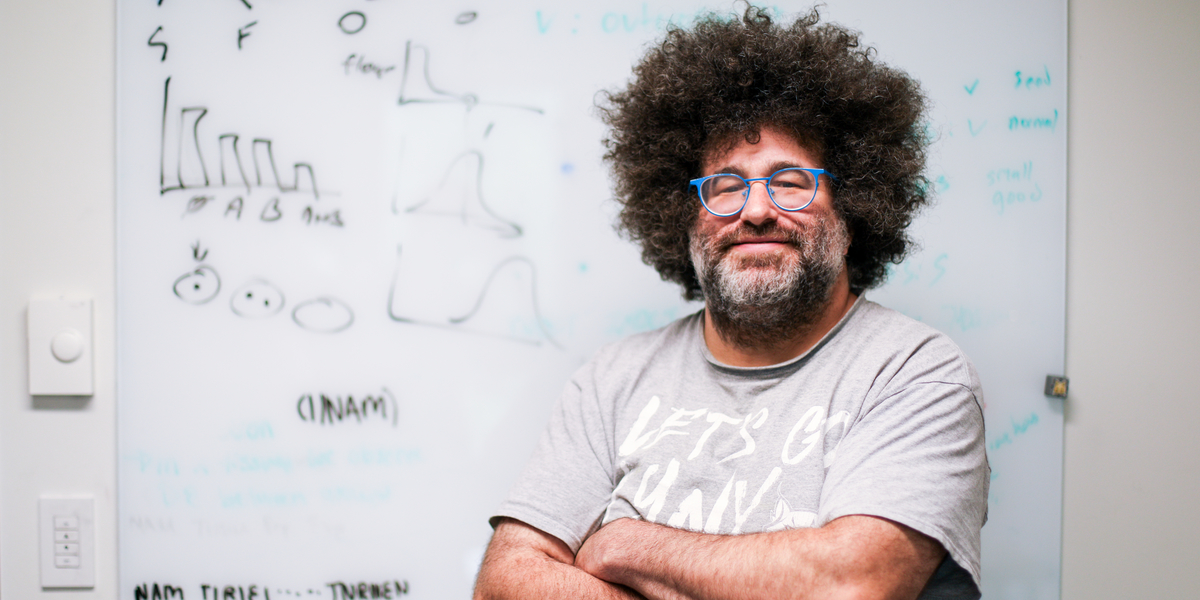
In the summer of 2020, Yaniv Brandvain often found himself awake at 2 a.m., writing and recording videos in his home basement. After a semester of pandemic-induced remote instruction as an associate professor in the Department of Plant and Microbial Biology, Brandvain already had his eye on the spring semester, when he would teach Applied Biostatistics to undergraduate and graduate students. The class would occur online, and he wanted to create something that would support students in the moment while also outlasting the unusual circumstances. The result of those late-night efforts was a free multimedia textbook that he published online.
“I wanted to be able to provide the students with a more permanent resource,” Brandvain says, noting that, even before the pandemic, alumni would tell him they continued to reference notes and slides from the class as they advanced into their careers. The textbook formalizes those materials into a cohesive package. Yet the digital format means the textbook can evolve with student needs and incorporate dynamic elements, such as videos that Brandvain recorded introducing core concepts and statistical tools. Increasingly, he is adding videos from other sources that allow students to engage with additional voices and perspectives.
The textbook is only one example of Brandvain’s innovative accomplishments as an undergraduate educator for which he was recognized with the Stanley Dagley-Samuel Kirkwood Undergraduate Award this spring. Over the past two years, he has also developed video training modules for incoming undergraduate students that introduce them to R, the standard programming language for statistical computing and modeling. The modules are designed to preempt the trepidation students often feel when encountering R later in their academic journeys by providing hands-on training from the outset.
Despite the importance of computational skills for biologists, Brandvain notes that he’s come to deemphasize the number-crunching aspects of statistical analysis in the classroom, recognizing that this often comes at the expense of learning more foundational concepts.
“Statistics is a fundamentally different way of interpreting the world relative to what students might see in a chemistry or physics or math class,” Brandvain says. “One of the most important take-homes is to recognize the difference between something you see once versus global patterns that are more repeatable, and then to try figuring out how repeatable they are while maintaining a critical view towards the information that's reported.” These competencies help people make informed decisions as citizens of the world, regardless of their use of R in day-to-day professional careers.
Brandvain also invites undergraduates to conduct research in his lab, where they explore the evolutionary forces driving plant speciation. This research, which requires heavy statistical analysis, is another testament to his growth-oriented educational approach. He’s learned the importance of developing projects that start small and build incrementally, ensuring students experience the victory of completing a discrete unit of research before deciding whether to continue with the next steps. Ideally, this stepwise process culminates in a senior thesis or, even better, a peer-reviewed publication. Just this year, Brandvain published two papers with a recent undergraduate alumnus and is developing additional publications with two other graduates.
“As a professor, it’s easy to think that you're teaching a bunch of people who are just like you,” Brandvain notes. “Yet I found that nothing is more challenging and important than trying to figure out effective ways to teach a diverse student body with their different skills, backgrounds, motivations and interests.” Even without running the results through R, it’s clear this pedagogical approach is a good model to follow. — Jonathan Damery